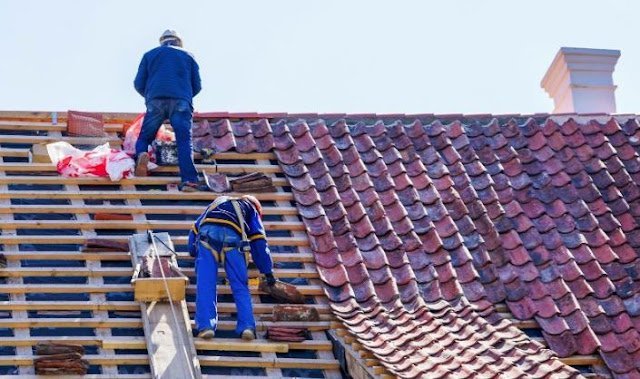10 Signs Your Roof Needs to Be Replaced Immediately
A healthy roof is vital for the safety and longevity of your home. It protects you from the elements, maintains your property’s insulation, and contributes significantly to your home’s overall aesthetic

A healthy roof is vital for the safety and longevity of your home. It protects you from the elements, maintains your property’s insulation, and contributes significantly to your home’s overall aesthetic. However, even the sturdiest roof can suffer from wear and tear over time, often without clear signs of deterioration until a major issue arises. In this article, we explore ten clear indicators that your roof may require immediate replacement. By understanding these signs early, you can avoid costly repairs, potential safety hazards, and further structural damage.
1. Missing or Damaged Shingles
One of the most obvious indicators of roof trouble is the presence of missing, cracked, or curled shingles. When shingles lose their protective coating or become visibly damaged, your roof’s barrier against harsh weather weakens. A few missing or broken shingles might seem insignificant at first, but they can quickly lead to water leaks and compromise the roof’s overall integrity if not addressed promptly.
2. Persistent Leaks and Water Stains
Recurring water stains on your ceiling or walls can be a sign that your roof is failing to keep water at bay. Even after temporary repairs, if leaks persist or if you notice moisture damage reappearing, it may indicate that your roof has deeper issues. Water infiltration not only damages the interior of your home but can also lead to mold growth, posing serious health risks to your family.
3. Granule Loss on Shingles
Asphalt shingles are coated with granules to protect them from the sun’s harmful ultraviolet rays. Over time, these granules can wear away due to weather exposure, especially after severe storms. If you see granules accumulating in your gutters or notice bald patches on your roof, it’s a strong signal that your shingles are deteriorating. Without their granule layer, the shingles are more vulnerable to damage, which can accelerate the need for a complete roof replacement.
4. Sagging Roof Deck
A sagging or uneven roof deck is a red flag that structural damage may be taking place. This condition often results from prolonged exposure to moisture, heavy snowfall, or even improper installation. A sagging roof not only looks concerning but also poses significant risks, including the possibility of a collapse under additional weight. Immediate replacement, along with structural reinforcement, is essential in such cases.
5. An Aging Roof
Every roof has a finite lifespan, and as it ages, its performance naturally declines. If your roof is approaching or has exceeded its expected service life, replacement should be strongly considered. Aging roofs lose their ability to effectively shield your home from severe weather, which can lead to unforeseen leaks and escalating repair costs over time.
6. Damaged Roof Flashing
Roof flashing, which is installed around areas where the roof meets other structures (such as chimneys, vents, or skylights), plays a crucial role in preventing water intrusion. When flashing becomes cracked, rusted, or detached, water can seep in, causing damage to the underlying materials. Even if other parts of the roof seem intact, deteriorating flashing is a critical sign that a replacement may be necessary to maintain the integrity of the entire structure.
7. Rising Energy Bills
An often-overlooked symptom of a failing roof is a noticeable increase in energy bills. As the roofing material deteriorates, its ability to insulate your home diminishes, resulting in increased heating and cooling costs. If you find that your monthly energy expenses are climbing without a clear explanation, it may be time to have your roof inspected for possible replacement.
8. Excessive Moss or Algae Growth
While a bit of moss or algae on a roof can sometimes add a quaint charm, excessive growth is a sign of trapped moisture. Over time, moss and algae can lift shingles away from the roof surface, creating gaps where water can infiltrate. This not only accelerates the decay of your roofing materials but also increases the risk of leaks. Persistent growth often indicates that the roof is failing to shed moisture effectively and may need to be replaced.
9. Storm or Hail Damage
Severe weather events, including strong winds, heavy rains, and hailstorms, can inflict significant damage on your roof. Dents, cracks, and broken shingles are common after a storm. Even if the visible damage appears minimal, the structural integrity of your roof might be compromised, setting the stage for future leaks and additional repairs. A thorough inspection after such events is critical to determine whether a full replacement is the safest option.
10. Frequent Repairs
If you find that you are repeatedly calling in for roof repairs, it might be more economical in the long run to invest in a complete replacement. Frequent fixes indicate that the roofing material is reaching the end of its useful life, and patching up problems continuously only delays the inevitable. A full replacement not only ensures lasting protection but also provides peace of mind for years to come.
For homeowners in regions where weather challenges are prevalent, consider reaching out to central florida roofing experts who are well-versed in local conditions, or consult Residential Roofers In Florida for professional advice and services.
In conclusion, recognizing these ten signs early can save you from severe damage and unnecessary expenses. A proactive approach to roof maintenance and timely replacement not only protects your home but also enhances its overall value and energy efficiency. Regular inspections and prompt attention to warning signs are your best strategies to ensure that your roof remains a strong, reliable shield for your family and property.
What's Your Reaction?












